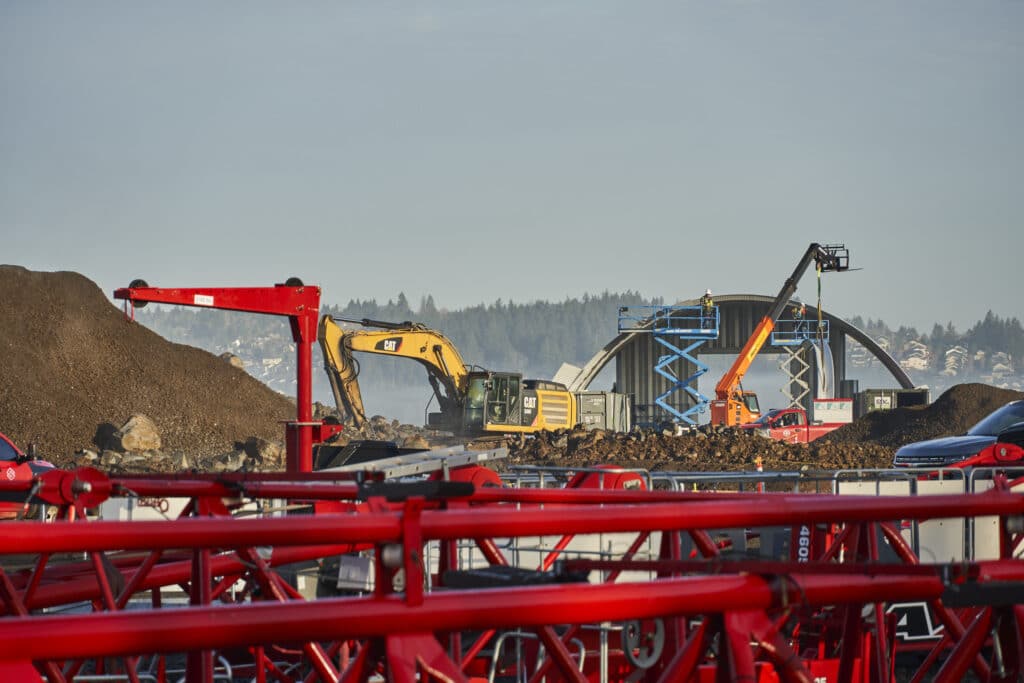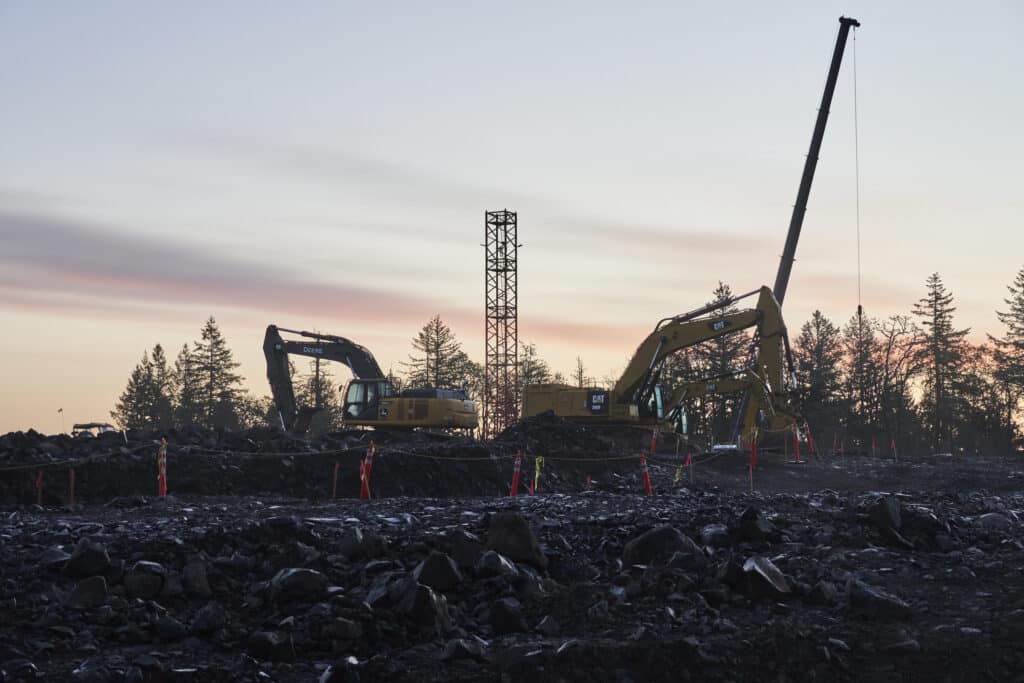Sundt’s Northwest team is making headway on a major project in Oregon that benefits Tualatin Valley Water District, City of Hillsboro, and City of Beaverton water customers and boosts the local economy. Once complete, the Willamette Water Supply System (WWSS) Water Treatment Plant will bring a new water source to the partner agencies and be among the most seismically resistant water systems in the United States. The WWSS Water Treatment Plant extends Sundt’s resume and hones our expertise, but more importantly, it demonstrates Sundt’s commitment to building important infrastructure with skill, grit and purpose.
Commitment to Progress
According to Sundt Project Manager Mike Neher, the Willamette Water Supply System (WWSS) Water Treatment Plant “was a dream that has been in the works since 1974 but didn’t gain traction until 2015.” The partner agencies came together to form the Willamette Water Supply System Commission (WWSSC) to advocate for a cleaner and more reliable water source for their customers. From the beginning, Sundt worked diligently to honor the client’s design, while providing the lowest cost possible to the commission.
Sundt’s portion of the new system includes the $400+ million water treatment plant, roadway improvements, a new administration and operation building, pump station, and a 10-million-gallon, pre-stressed, concrete water tank—and that’s just a quarter of the overall $1.6 billion system. The new WWSS includes installation of 35+ miles of drinking water pipeline, a new 15-million-gallon water storage tank, and improvements to an existing water intake on the Willamette River. When all of the projects are complete, Sundt is responsible with starting up the entirety of the pipeline distribution system—a first in Sundt’s 133-year history.

“The Willamette Water Treatment Plant is an extremely important project for cementing Sundt’s presence in the Northwest Geography. The project not only builds our resume, but spreads Sundt’s culture to subcontractors and new employee-owners.” -Mike Neher, Project Manager, Industrial West
The project placed a heavy emphasis on local hiring for strategic reasons. “Our initial goal was to staff the job with 60% existing staff and bring in 40% local staff. We’ve more than flipped that goal. Seventy percent of our project is staffed by local residents, which is exciting that we can contribute to the local economy and have the capacity to grow into new projects in the future.”
“We hired a few people at the beginning of the project, and they helped us get the word out, locally. After that, our reputation and safety program started gaining traction. Our new hires are excited about our culture and opportunities for employee-ownership.” -Mike Neher, Project Manager, Industrial West
Seismic Resiliency
As an added challenge, the water treatment plant is close to the Cascadia subduction zone, an active fault line off the Pacific Coast shoreline between northern California and British Columbia. It’s known for producing the largest earthquakes in the world. Because of this, the seismic design requirements are extensive and well-above the industry norm. “Each of the major processing systems not only has to be seismically engineered, but also seismically certified. This requires that every piece of the system is certified to resist and survive a seismic occurrence. Most of our major process equipment will necessitate shake-table testing to meet certification requirements,” Mike explained.

“A lot of eyes are on Sundt to execute this job well, and I have confidence that we will meet our goals. This project is paving a new path of seismic design and resiliency for the future of America’s infrastructure, and for Sundt.” -Mike Neher, Project Manager, Industrial West
On top of seismically certified machinery, the project requires the integration of many subcontractors because of its 90+ deferred design packages. “We spent six months on outreach events to the local subcontractor and vendor community. Our focus was on educating local subcontractors on the unique requirements of this job, especially the seismic design components,” Mike said.
The project location was strategically chosen because of the basalt bedrock, which contributes to the seismic resilience. The project team performed six months of drilling and blasting rock, basically flattening the top of the hill that the water treatment plant will sit on. Once complete, the project is designed to withstand a 9.0 earthquake, and will be capable of producing drinking water for the community within 48 hours of a major seismic event. The project is slated for completion in 2026.
Sign up for the latest news, opportunities and updates about Sundt's activities in the Northwest.